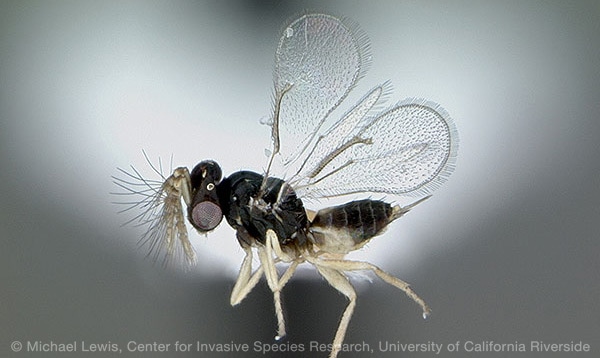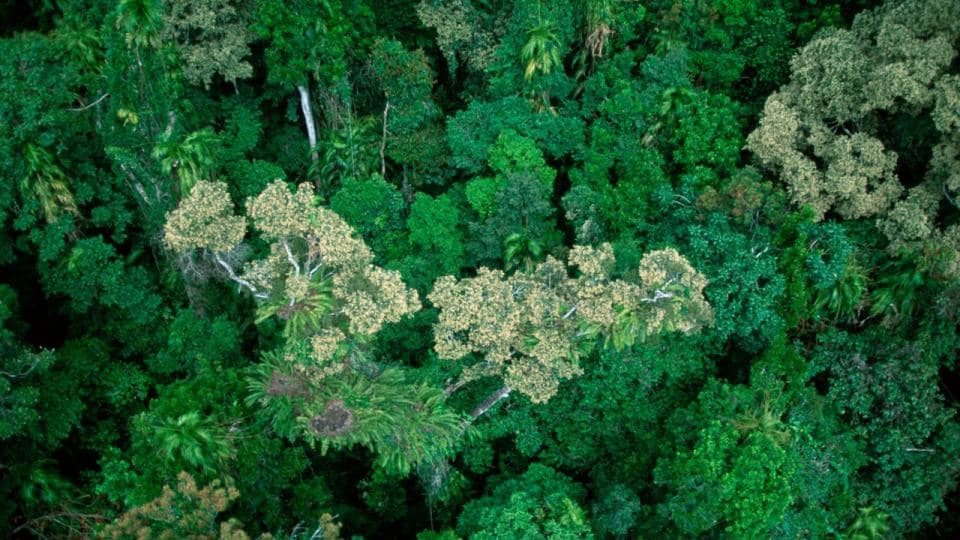Finding Solutions to Prevent Citrus Greening

Citrus Greening: Orange farmers like Dave Evans from Florida are worried about their survival.
Freshly pressed orange juice: for many people, this vitamin C-packed kick-start to the day is an essential part of breakfast. But that could soon change: citrus greening, an incurable tree disease, is destroying orange groves all over the world. The culprit is a bug called the Asian citrus psyllid.
The scent of orange trees in spring has accompanied Dave Evans for as long as he can remember. It would flood into his childhood bedroom as soon as his mom opened the window – and, later on, into the classroom at school. It was a sweet fragrance in the soft evening air when he went on his first date. Oranges are Dave Evans’ life. To this day, he still smells them every morning on his way to his grove. “But I don’t know if that’ll still be the case in a few years,” he says.
After more than 100 years in business, the family operation is now under serious threat - and not only Evans’ grove is at risk. Many orange farmers around the world are worried about their survival. Their fears are caused by the incurable tree disease citrus greening, which is spreading all over the planet. A bacterium prevents the transport of nutrients from the tree’s roots up to the crown. The leaves turn yellow, the fruits remain green and after three to five years, the tree dies.
The disease’s vector is the Asian citrus psyllid. These tiny bugs suck the sap of infected trees and, in doing so, take up the bacterium. They then transmit this disease to the next tree. The psyllids multiply extremely quickly and can therefore produce up to 30 generations in one year. One solitary surviving psyllid is capable of infecting an entire orange grove.
Almost every grove in Florida is affected by citrus greening, despite it being only 11 years since the disease was first reported in the state. “Back then, we were still producing 240 million 40-kilogram boxes of fruit every year,” remembers Evans. “Now we’re down to less than 100 million boxes – and there’s no end to the downwards spiral in sight.”
Every strategy deployed in the fight against this vector to date has failed. Bayer therefore initiated a concerted effort in which the company is working together on a global level with producer associations, research institutes and the beverage industry, and developed a new insecticide which was launched in Florida in spring 2015: Sivanto prime.

This product could be the savior for affected orange-growers. Farmers’ initial experiences with the insecticide have been extremely positive. Ask Vic Story, a long-standing orange-grower in Dave Evans’ neighborhood, for example: “The product’s rapid onset of action impressed me. The psyllids stop sucking immediately and can’t infect any more trees,” explains the 70-year-old. “In addition, the product is taken up by the plant and therefore remains effective for up to three times as long as an insecticide that only adheres to the leaves. What's more, when used correctly it does not harm bees and many of the psyllids’ natural enemies.”
- 1/7
- 2/7
- 3/7
- 4/7
- 5/7
- 6/7
- 7/7







Following the initial successes in the fight against the disease in Florida, Bayer wants to prevent citrus greening from spreading to other regions like wildfire and is therefore collaborating with the producer association “Fundecitrus” in Brazil. “We provided support for the set-up of a psyllid early-warning system to nip the populations in the bud,” explains Kai Wirtz, Global Crop Manager Fruit at Bayer. This does not mean that the risk of reinfection is completely eliminated, however. The bacterium can still continue to spread from abandoned groves or untreated trees in private gardens.

The Difference between From-concentrate Fruit Juices and Not-from-concentrate Juices
Not-from-concentrate juice is immediately filtered and pasteurized after pressing, i.e. gently heated to extend its shelf life. In the case of from-concentrate fruit juices, water and aroma are removed from the juice, which reduces the fruit juice down to a sixth of its volume. The aroma and juice are stored and transported separately. Before being sold, the two components are reconstituted and diluted with purified drinking water. This procedures leads to enormous savings in storage and transport.
Bayer and the producer associations are therefore working together to control the vector with the wasp Tamarixia radiata, which lays its eggs directly on the psyllids’ nymphs (see box). In addition, an educational campaign will be launched to inform the owners of private gardens how they can help in the fight against citrus greening. “We won’t be able to fully eradicate this disease in the foreseeable future. But I think we can push it back,” says Kai Wirtz. “We could have citrus greening under control within 10 to 15 years.”

A Natural Enemy
The wasp Tamarixia radiata is a natural enemy of the disease vector. A single female Tamarixia can control up to 500 psyllid nymphs. It lays its eggs on the nymphs; once they hatch, the larvae then penetrate into the nymphs. Bayer Crop Science is supporting Koppert, a Netherlands-based company that markets beneficial insects, in its work to breed Tamarixia wasps. 100,000 insects are released every month in Brazil alone.
It is words like these that raise hopes and encourage orange-growers like Dave Evans and Vic Story to keep fighting. They are committed to saving their groves, so that their sons and grandchildren will be able to enjoy the scent of oranges when they go on their first dates as well – and so that orange juice will continue to be a fixture on the breakfast table in the future.




















